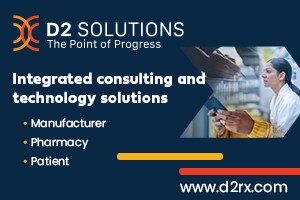Artificial intelligence (AI) has emerged as one of the most significant innovations in reproductive medicine over the past decade. By enhancing decision-making, standardizing procedures, and improving treatment outcomes, AI is reshaping the entire in vitro fertilization (IVF) journey—from initial consultation to embryo transfer. Its applications span both the clinical and laboratory domains, with the goal of improving success while minimizing the physical and emotional burden on patients.
Clinical Applications: Personalizing Patient Care
One of the most complex challenges in IVF is individualizing ovarian stimulation. Historically, clinicians relied on generalized protocols that exposed patients to risks such as ovarian hyperstimulation syndrome (OHSS). AI now enables personalization by integrating demographic, biochemical, and prior treatment data into predictive models. These systems recommend tailored gonadotropin dosing, improving both efficacy and safety.[1][2]
Machine learning techniques, such as support vector machines with cross-validation, have shown particular promise. They incorporate variables such as age, anti-Müllerian hormone, antral follicle counts, and body mass index to forecast ovarian response and oocyte yield.[2] By identifying patients at risk for poor or exaggerated responses, AI allows pre-emptive adjustments in dosing strategies and cycle planning.
AI also assists in fine-tuning the timing of trigger administration and oocyte retrieval. Continuous analysis of follicular growth and hormone levels provides real-time recommendations, helping clinicians optimize outcomes in ways that would be difficult with manual interpretation alone.
Laboratory Revolution: Enhancing Embryo Assessment
The IVF laboratory has seen the most transformative impact of AI, particularly in embryo evaluation. Conventional embryo grading, based on morphology, suffers from inter- and intra-observer variability. AI-driven image analysis—using both static and time-lapse data—introduces objectivity, reproducibility, and standardization, all critical components for increased success.[3–7]
Time-lapse incubators paired with AI algorithms monitor embryos continuously under optimal culture conditions, detecting subtle morphokinetic features linked to implantation potential. These tools can identify viable embryos that might otherwise be overlooked, improving selection accuracy.
Genetic screening of embryos (PGT-A) has proven to be a valuable tool in choosing the most viable embryos for transfer. The process requires the removal of a few cells from the fully developed embryo, a procedure that may reduce the overall viability.
By analyzing morphokinetic data, AI can predict ploidy status with meaningful accuracy.[3][4][7] While not a replacement for preimplantation genetic testing, these models provide supplemental insight, especially in cases where biopsy is not feasible. Studies increasingly suggest that AI-based scoring can surpass manual embryologist assessments in predicting implantation and live birth outcomes.[4–6]
Beyond Embryos: Comprehensive Laboratory Applications
- AI applications extend beyond embryo selection.
Andrology: AI-enhanced sperm analysis evaluates motility, morphology, and trajectory across thousands of cells simultaneously, improving the embryologist’s ability to select that most viable sperm for fertilization. Similar to embryo assessment AI assisted sperm selection can identify optimal sperm candidates for ICSI more efficiently than manual review. - Laboratory quality management also benefits from automation. AI-driven monitoring tracks incubator conditions, equipment performance, and compliance metrics, alerting staff to deviations before they impact gametes or embryos. This predictive oversight strengthens laboratory reliability and patient safety.
- Automated tracking and identification systems ensure gamete and embryo identification throughout the IVF workflow. These digital records not only reduce the risk of mix-ups but also support regulatory compliance and provide robust datasets for ongoing quality assurance.[3][7]
Challenges and Future Directions
Despite remarkable progress, limitations remain.
- Generalization of data: Many AI models are trained on single-center datasets, raising concerns about generalizability across diverse patient populations and laboratory environments.[2] Large multicenter collaborations are necessary to develop robust, widely applicable algorithms.
- Validation: AI innovation outpaces regulatory adaptation. The “black box” nature of many systems’ algorithms raises questions about interpretability and accountability. Clinicians must be able to understand not just the recommendations but also the rationale behind them—particularly when AI guidance diverges from clinical intuition.
- Ethical considerations are equally pressing. Safeguards are needed to protect patient data, ensure informed consent, and mitigate algorithmic bias. There is also the risk of over-reliance: while AI provides consistency and objectivity, it cannot yet replace clinical judgment and human expertise. The optimal path forward is integration—using AI to augment, not supplant, physician decision-making.
Conclusion
AI holds substantial promise in standardizing IVF protocols, improving clinical outcomes, and enhancing laboratory efficiency. [8–10] By reducing subjectivity and operator dependence, these tools may democratize access to high-quality reproductive care worldwide.
Realizing this potential requires further investment in large-scale validation studies, multicenter collaborations, and thoughtful regulatory oversight. Ethical frameworks must evolve alongside technology to ensure equitable and transparent use. Ultimately, the future of IVF lies in synergy between the advanced algorithms and human expertise. As AI technology matures, its value for the millions of individuals and couples struggling with infertility will increase.





